At the beginning of March, we went on our annual “thrasher hunt,” out to the salt brush desert scrub about an hour and a half drive away. Our friends Mary and Rich joined us. It was a beautiful day, but the LeConte’s Thrasher that we had hoped to see, stayed quiet and hidden, if it was there at all.

We did get a good view of a Sagebrush Sparrow, which also likes this habitat. There were also several Sage Thrashers.

On our way back to town, we drove to an area that White-tailed Kites had been seen. Rich spotted one as he was driving, so we hopped out of the vehicles to get a good look.
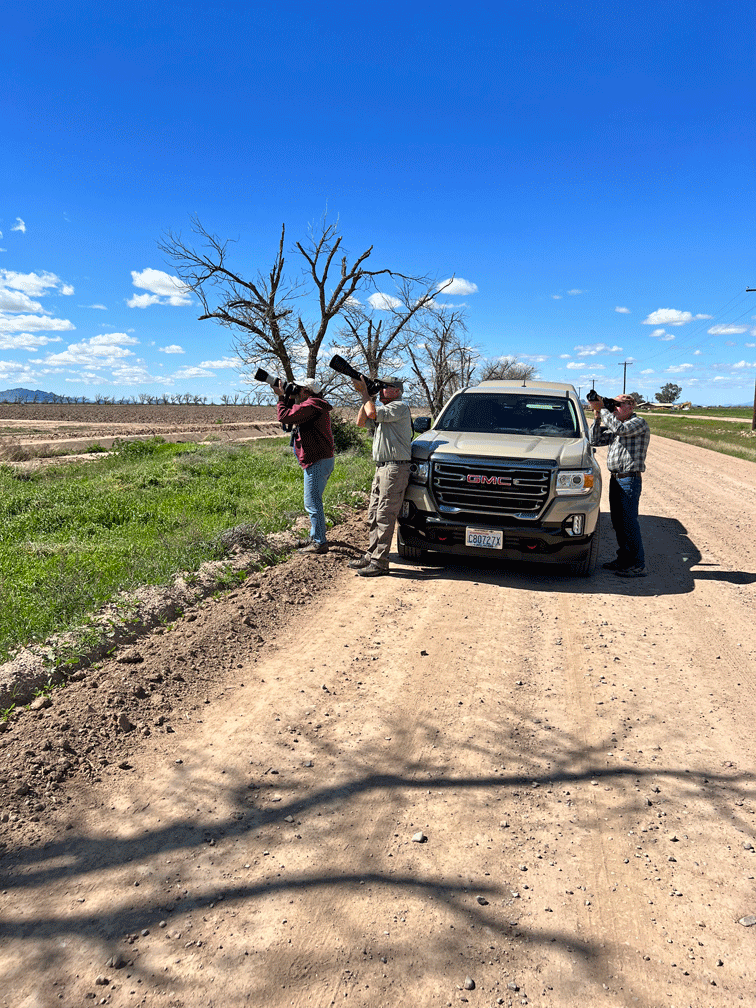
For about fifteen minutes, the kite flew around the fields. It hunts from the air, often hovering gracefully (or kiting) then dropping straight down. After a bit, it flew closer so it was almost overhead.
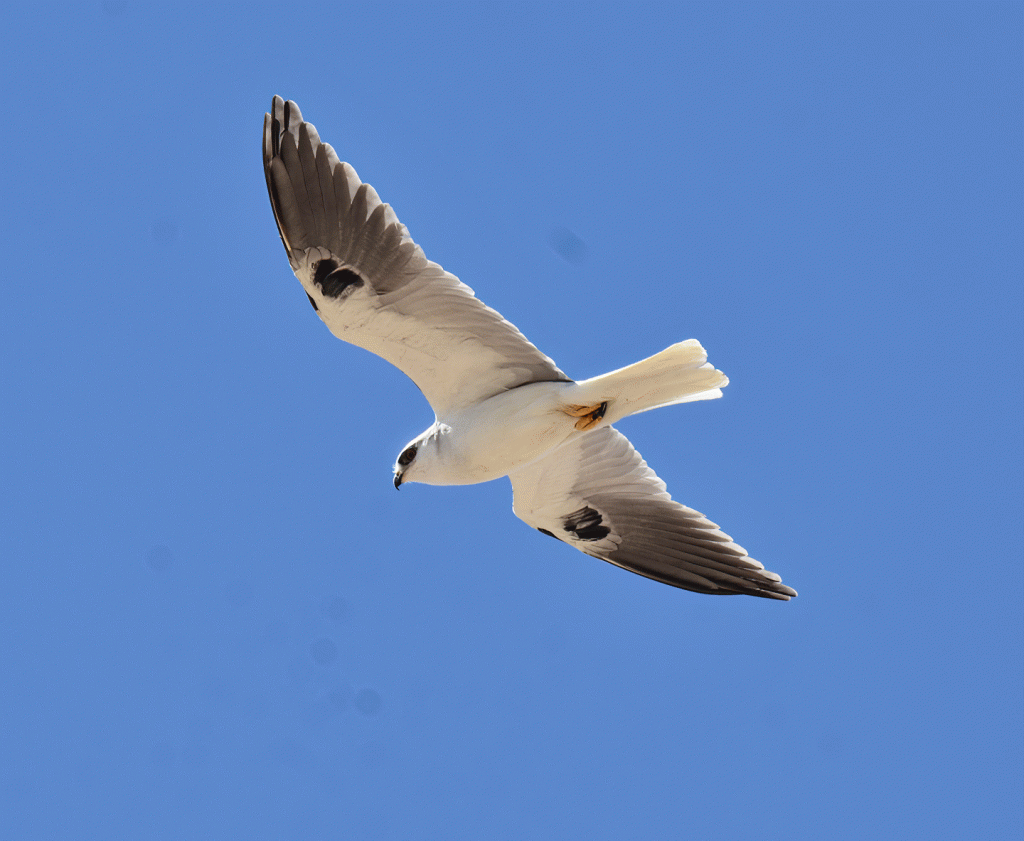
Another day drove down to Patagonia, AZ again. This time we saw a Louisiana Waterthrush near the creek that flows beside the Paton Center for Hummingbirds. The Louisiana Waterthrush and the Northern Waterthrush are very similar. The Louisiana one is best distinguished by a broader white eyebrow and sparser streaking than a Northern Waterthrush. Their songs are quite different, which helps in the identification.
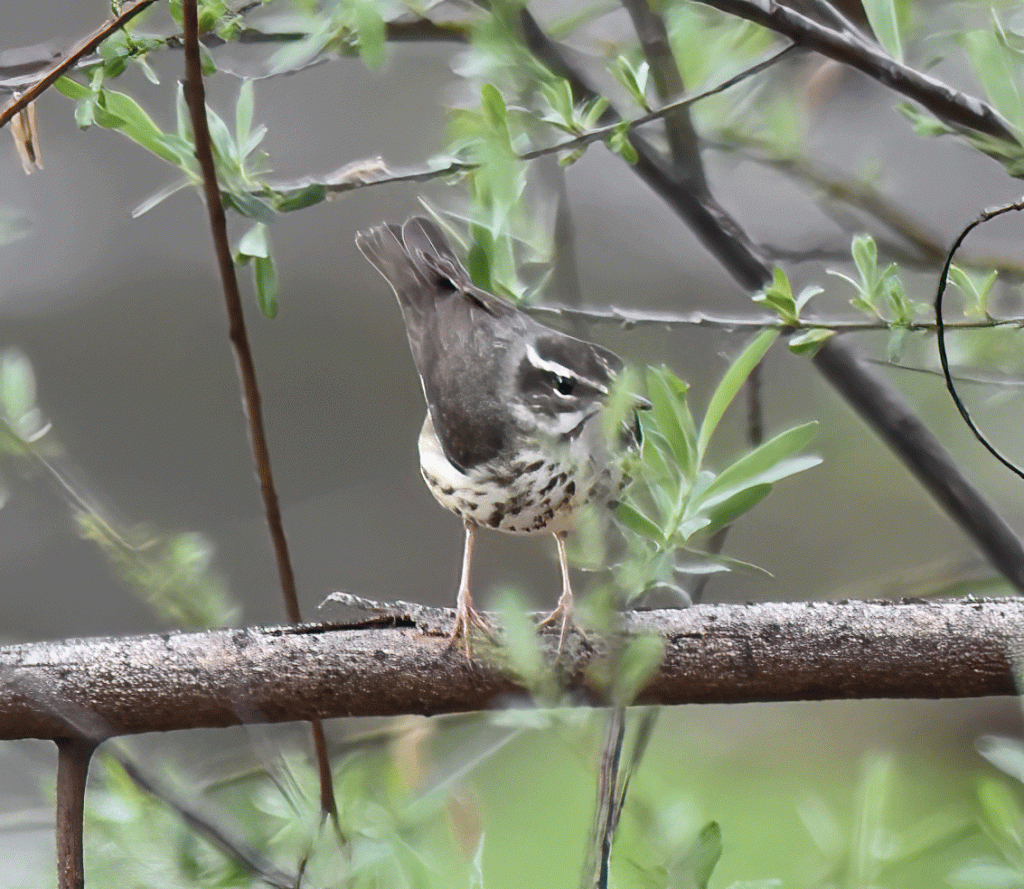
We didn’t have to wait long for the Louisiana Waterthrush to show up for us, so we had time on our way home to stop at Empire Gulch in Las Cienegas National Conservation Area. Our friend, Rich had seen a Winter Wren there and we hoped to see it too. It’s a little wren that is very similar to a Pacific Wren, except for its song. Mostly it stayed hidden, teasing us with its calls, but luckily it hopped up on to a log long enough for Doug to get a photo.

We made a number of trips to Agua Nueva, a newly opened park near Sweetwater Wetlands, in hopes of seeing a Swamp Sparrow. The first few times, we saw several Lincoln’s Sparrows, and this one perched in good light.

We also saw our first Broad-billed Hummingbird in the Tucson area for the year. The sky was overcast that day.
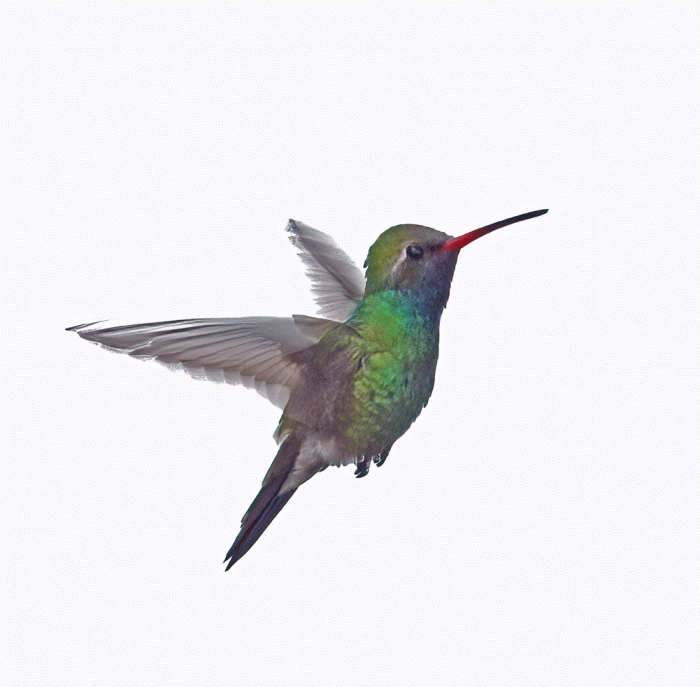
This Cooper’s Hawk has a nest nearby. We saw it as we were leaving one day and hoped that it hadn’t made a dinner of the elusive Swamp Sparrow.
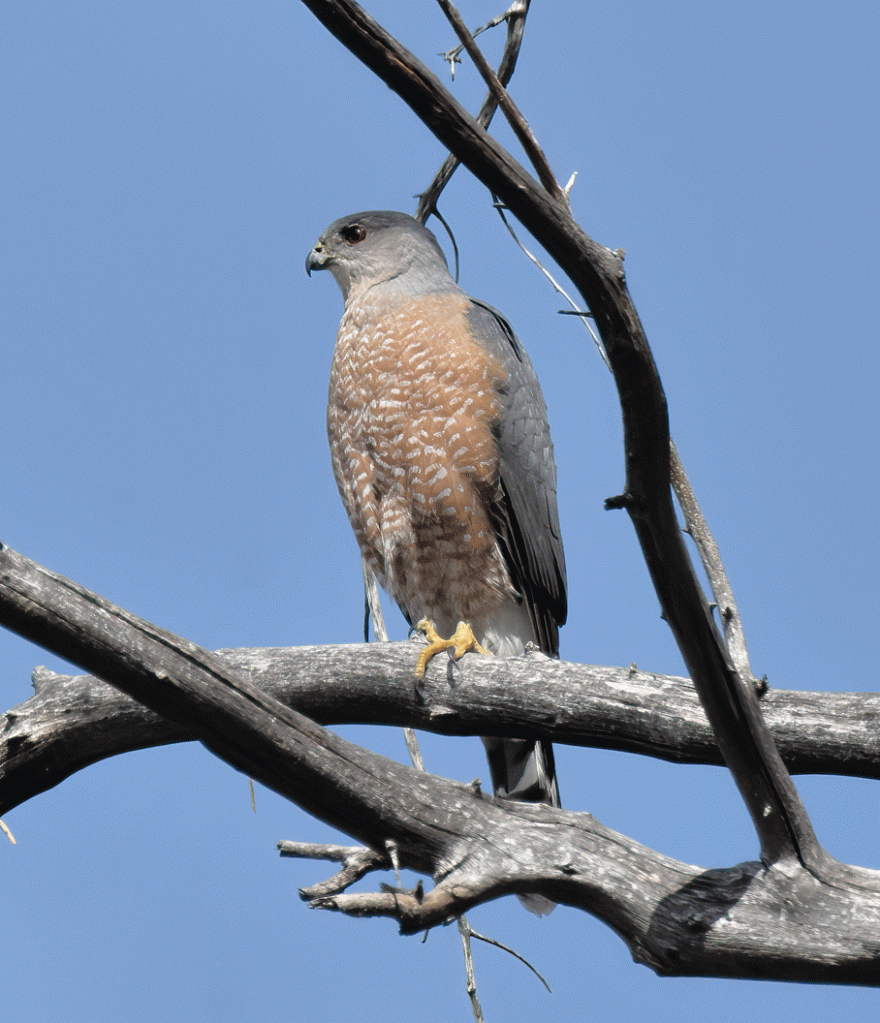
Finally we were successful. One morning, the Swamp Sparrow foraged along the edge of the island about fifteen to twenty metres away from us.

This female Summer Tanager was hanging out in Reid Park in the middle of Tucson for the whole winter, but it took us until March to get a good look at her. This day, she was perched very high in a pine tree. Summer Tanagers are regularly seen in Arizona in the summer and usually migrate south for the winter months.

We visited the Hawk Watch in Tubac a couple of times. We didn’t happen to be there when large flocks of hawks flew over, but we did see several different species. Sometimes the birds were so high that they could only be identified by an expert with a scope. Several people watched from dawn to dusk for the whole month of March, and one enthusiast started a few weeks earlier and continued into April.

Many visitors come to see the migrating Common Black Hawks. They nest in areas of Arizona and New Mexico that have cottonwood trees.

Gray Hawks also like riparian woodlands, but they don’t travel very far past the Mexico border. The fluff in the photo is from the nearby cottonwood trees.

When we were in the Tubac area, we walked one of our favourite trails at Santa Gertrudis Lane. We were happy to see a Wilson’s Warbler. Soon Wilson’s Warblers will be common in Arizona in wooded areas while they make their way northward.
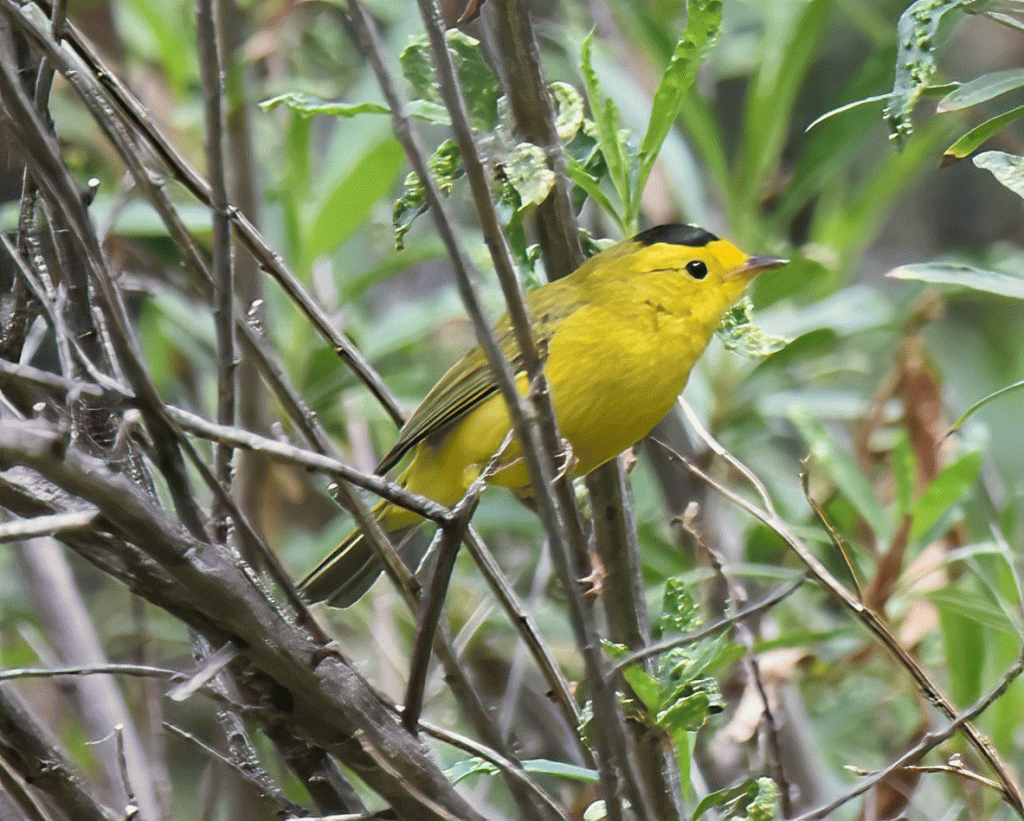
Here’s a view of Reservation Road in Avra Valley. Usually when we bird in a spot like this, we’re the only ones around. But a Grasshopper Sparrow, a Cassin’s Sparrow, a number of Bendire’s Thrashers and Sage Thrashers (all rarities) were reported in the area, and several people chose to look for them on the same day. Luckily for us, the Grasshopper Sparrow was closer to the road when we saw it. Doug is in the photo, but only to give encouraging words to the other birders before we left.
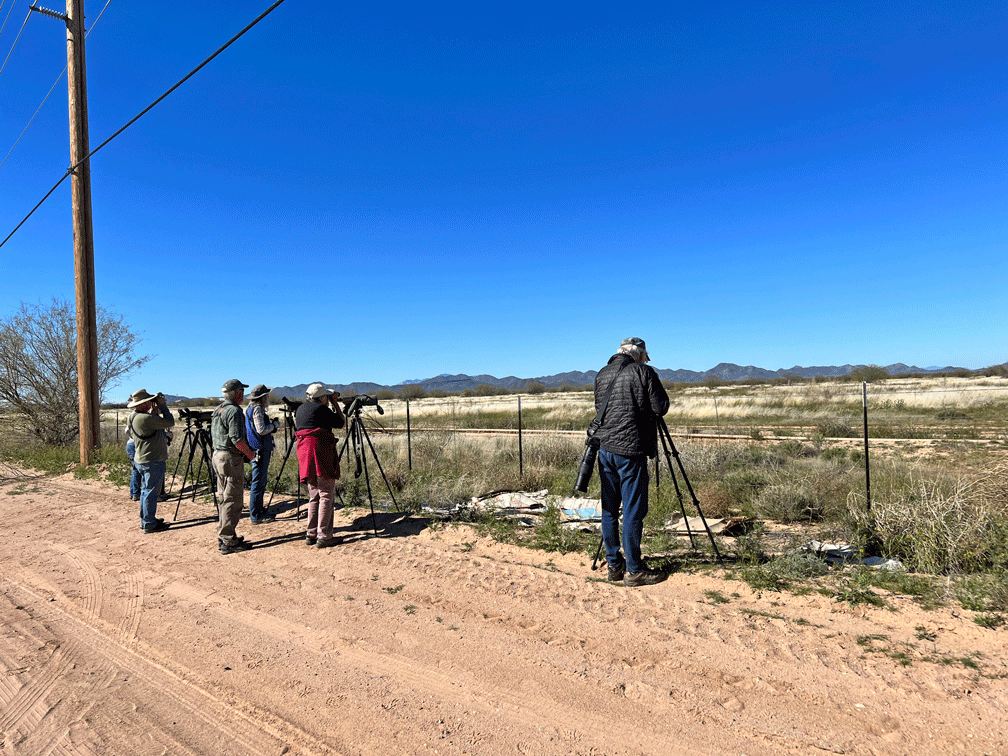
The Grasshopper Sparrow did not pose nicely for a photo and our views of it were obscured by branches. But we saw a Cassin’s Sparrow on a tree about twenty-five metres (or a pool length) out from the fence.
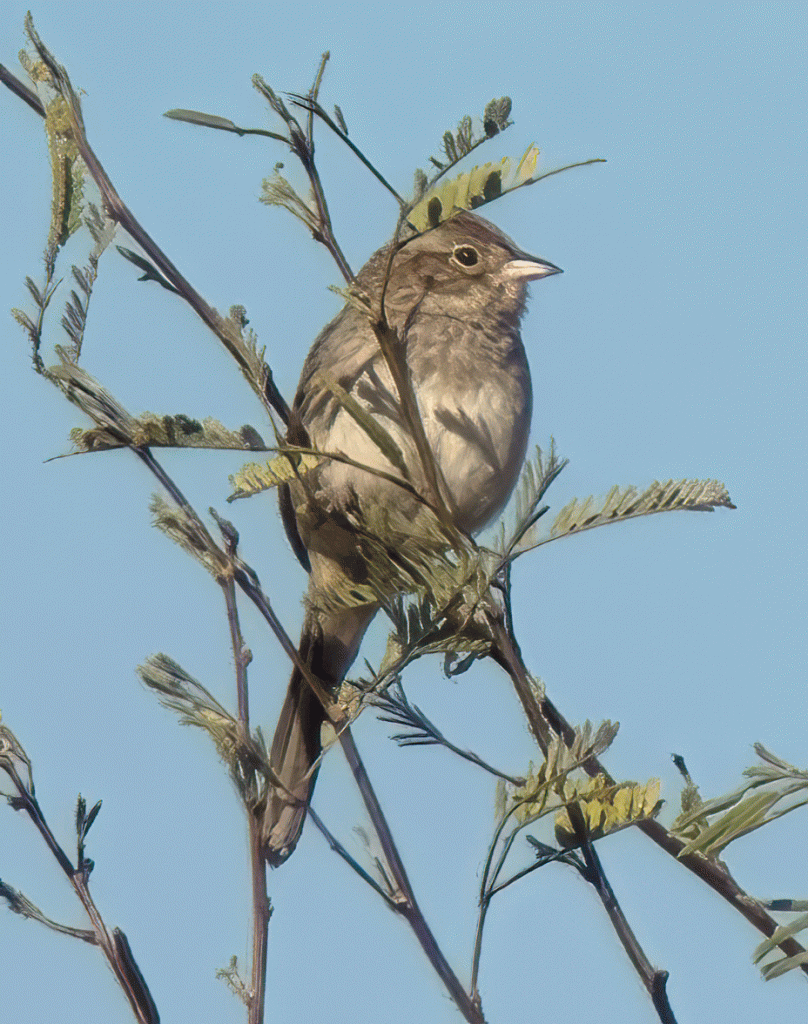
This Vesper Sparrow popped up much closer to the fence, resulting in a much clearer photo.

The next photos are from our visits to the Sweetwater Wetlands, one of the top hotspots in the Tucson area. One day in early March, there were so many swallows flying around that it was hard to count them, until most of them chose to perch in the dead branches of a tree. It was then much easier to identify them as Northern Rough-winged Swallows, a very common swallow.
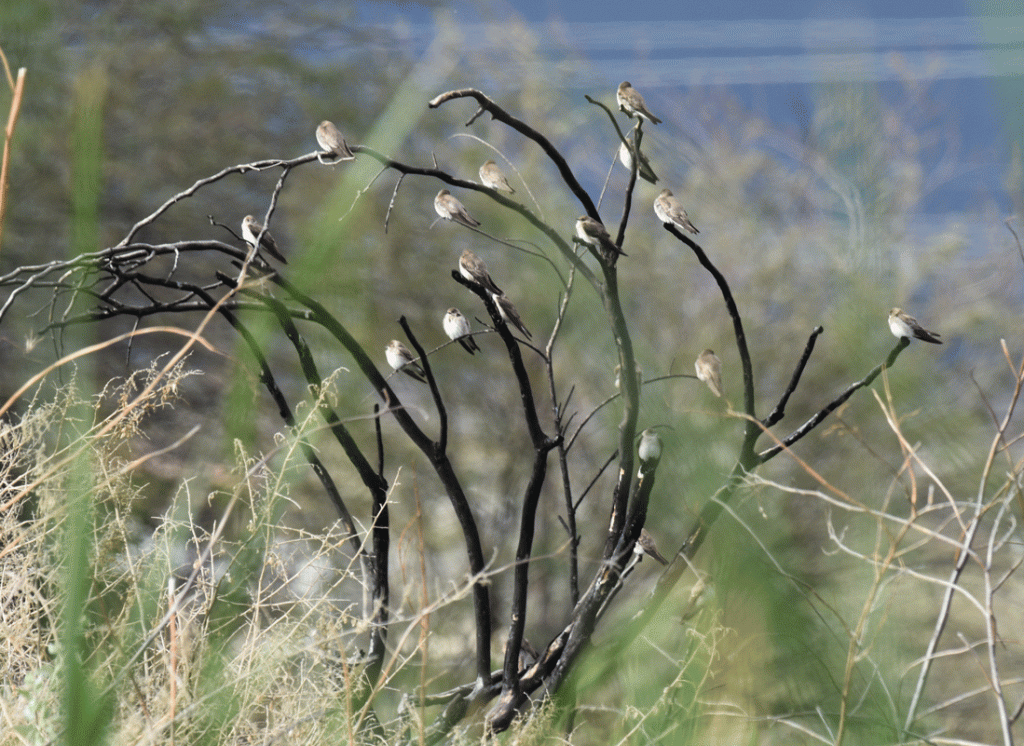
By the third week in March, the Bell’s Vireos showed up. Mostly we identify them by their distinctive song, but Doug was able to get a photo of one of these drab birds.
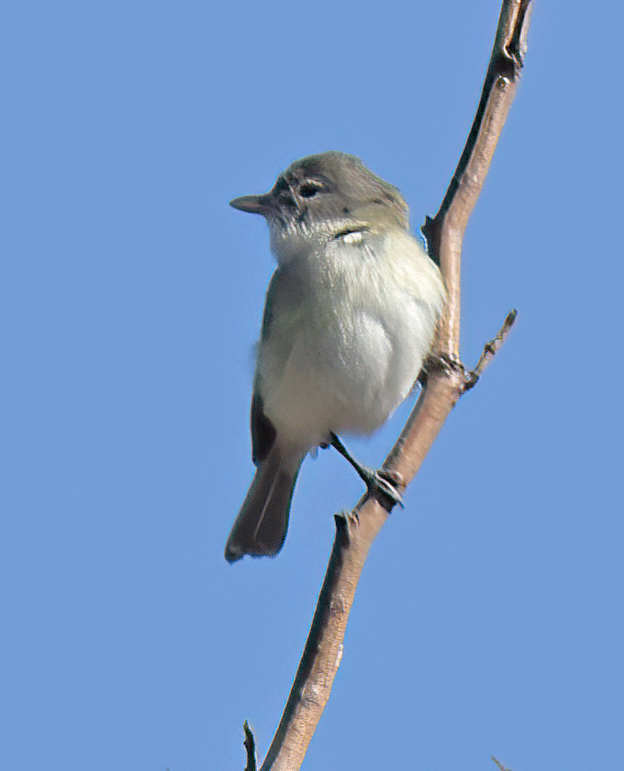
That same day, we watched a Greater Roadrunner deal with its dinner. First we saw it with a large Desert Spiny lizard in its bill, thrashing it against the ground. We suspect the bird was trying to make sure the lizard was truly dead. The roadrunner then manipulated the lizard so it was lengthwise, and started swallowing it, head first.
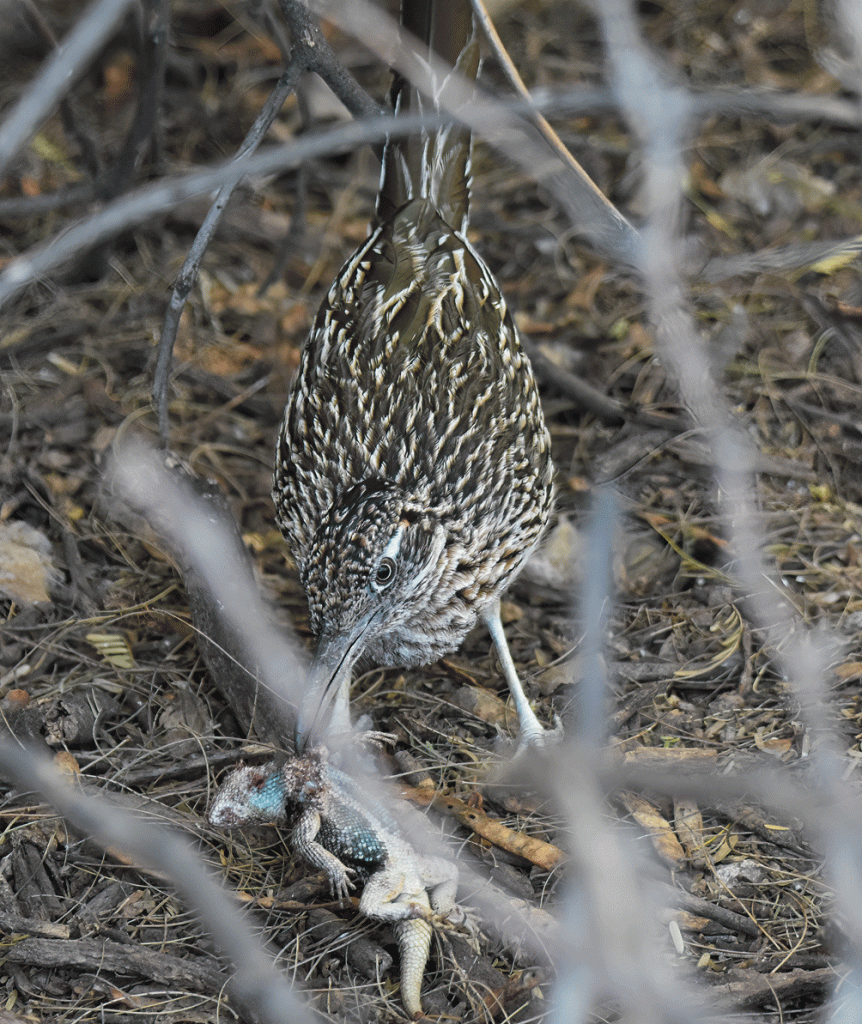
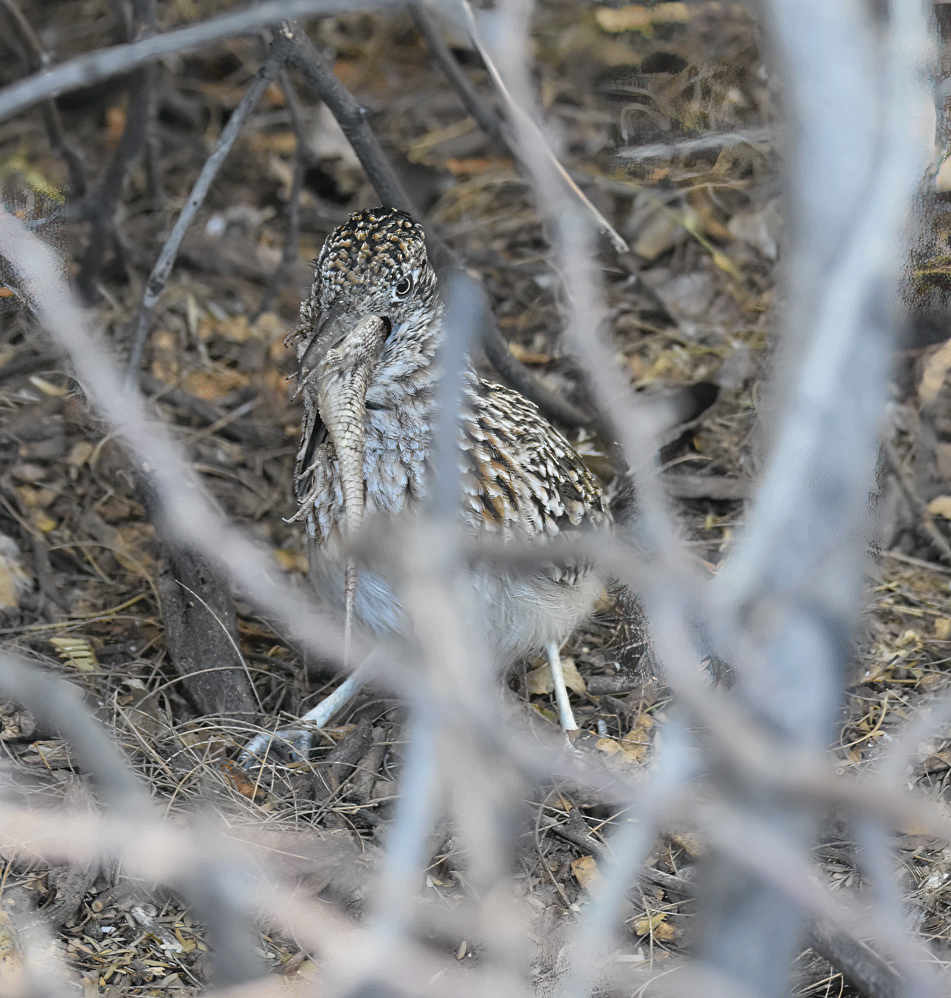

We always have interesting birds in our yard, but we don’t often share the photos of them on the blog. So here are a couple. This Curved-bill Thrasher has a longer than normal bill. It’s a bill deformity, and can make it difficult for a bird to eat. This thrasher visited our feeder, so it’s managing. We’ve since researched bill deformities in birds. A longer curved bill on a Curved-bill thrasher is not as dramatic as the images of chickadees with long curved bills.(For more information search: Beak Deformities in Landbirds by Alaska Science Center, http://www.usgs.gov)
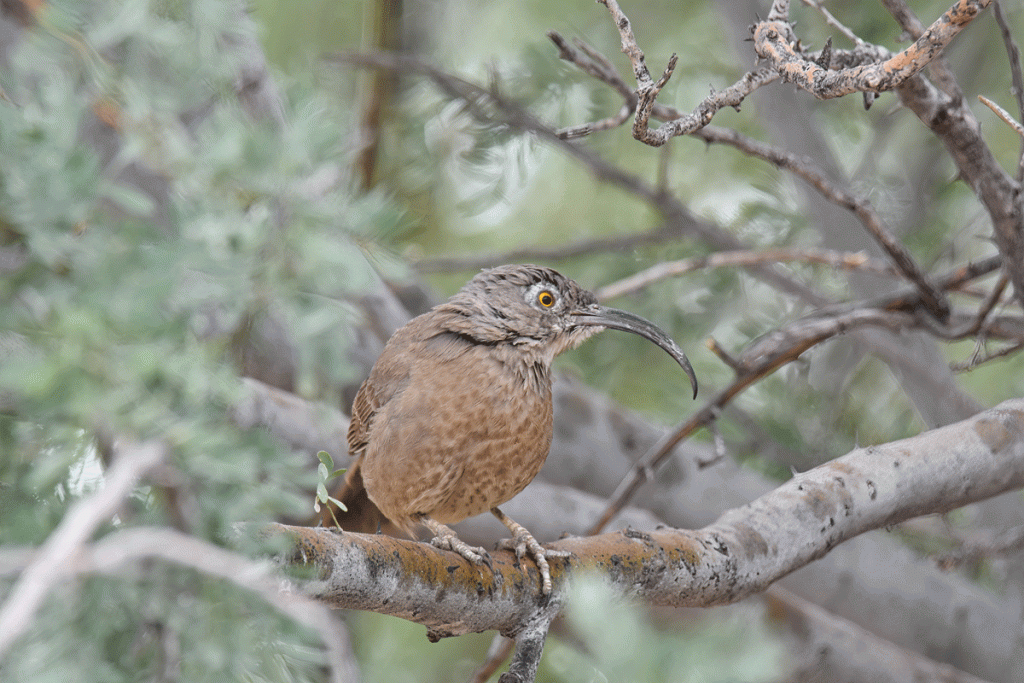
Here is an Inca Dove, which visited our yard at least once. It’s considered rare for the area, but we frequently hear them calling from the farm next door. It’s a small dove with beautiful feather patterns.
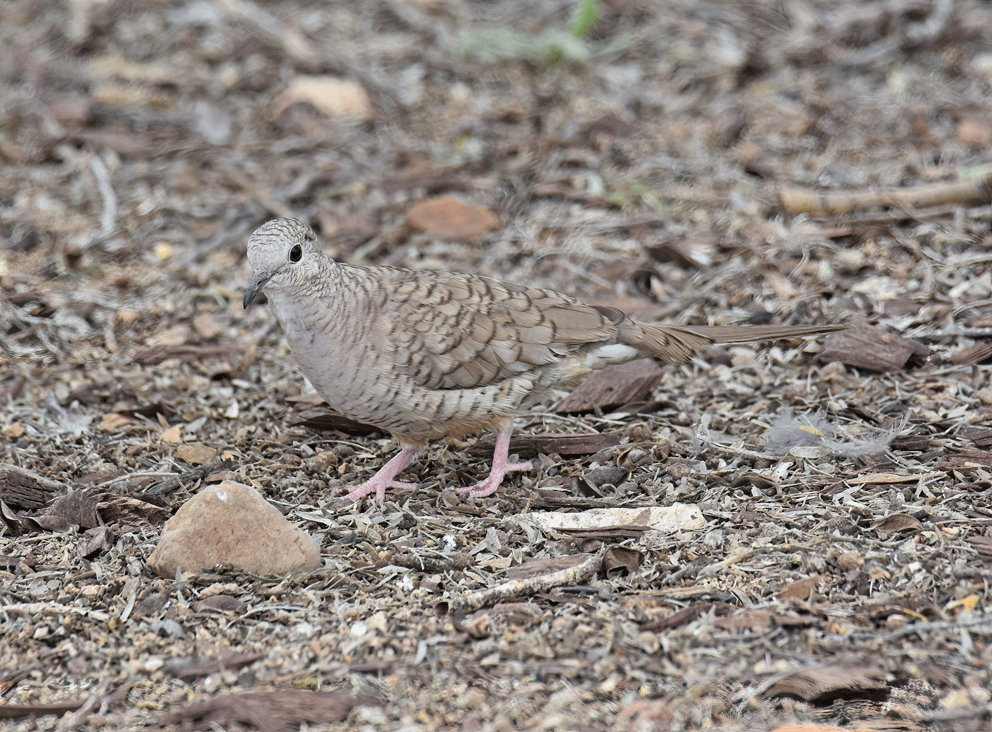
We enjoyed searching for different birds in March, but we expect April will be even better. At the beginning of April, we drove to Texas, and saw several new birds. Also, we hope we’ll see different birds as they migrate into the area. So there is lots to look forward to.
Mty favourites this time are the Wilson’s Warbler and the tree with the northern rough winged swallows. Thanks for sharing ☺️
LikeLike